Do you remember the good old days when a Saturday morning felt endless and the biggest decision was which VHS tape to pop into the player?
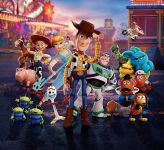
If you grew up in the ’90s, there’s a good chance Toy Story sat on that shelf, right next to your favorite snacks and action figures. Back then, Woody and Buzz weren’t just movie characters, they were part of the family, tucked into our toy boxes and our imaginations.
Ever find yourself replaying those moments in your head; wondering why a bunch of animated toys could leave such a permanent mark?
It’s because Toy Story wasn’t only about toys. It was about us. It mirrored our friendships, our fears of being left behind, even our quiet dreams of belonging. And let’s be honest, when Andy handed Woody over at the end of Toy Story 3, a lot of us felt like we were saying goodbye to our own childhoods. No shame in admitting that tear or two.
I can still picture myself holding onto my Buzz Lightyear figure, chanting “to infinity and beyond,” hoping maybe this time he’d take flight. That’s the kind of magic Pixar slipped into those films; it blurred the line between make-believe and memory.
In the pages ahead, we’ll crack open that toy chest again. We’ll revisit the milestones, relive the heartbreaks, and uncover the little secrets that made Toy Story more than just a movie.
Because the truth is, some stories grow up with us. And this one?
It still feels alive every time we hit play.
Toy Story wasn’t just another animated movie, it was the first full-length feature made entirely with computer-generated imagery. Pixar Animation Studios, then a small company backed by Steve Jobs, teamed up with Disney to make it happen. Directed by John Lasseter, the story was crafted by a team of soon-to-be legends: Pete Docter, Andrew Stanton, and Joe Ranft.
It hit theaters on November 22, 1995, and the impact was immediate. Kids saw their toys in a whole new way, and adults realized animation could be more than cartoons; it could tell layered, emotional stories.
The numbers tell the story. With a modest budget of around $30 million, Toy Story grossed over $373 million worldwide. It wasn’t just a hit; it was a cultural earthquake. The film earned critical acclaim, snagged three Academy Award nominations, and won a Special Achievement Oscar for breaking new ground in animation.
Think of it like this: without Toy Story, there’s no Shrek, no Frozen, no endless CGI blockbusters. It proved audiences wanted more than hand-drawn magic; they were ready for a new era.
The mid-’90s were buzzing with tech breakthroughs. The internet was becoming mainstream, home computers were showing up in living rooms, and video games like PlayStation were redefining playtime. Into this mix came a movie about toys dealing with change, jealousy, and friendship. It fit perfectly.
Disney was already in its Renaissance period with hits like The Lion King and Aladdin, but Pixar’s entry brought something different: sharp humor for adults, emotional beats for kids, and visuals no one had seen before.

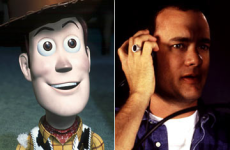
He’s the loyal leader of Andy’s toys, the glue that holds the group together. His defining trait is his deep sense of responsibility; sometimes too much, leading to jealousy or fear of being replaced. Woody taught audiences what it means to protect those you care about, even when it hurts.
His bond with Andy and later his struggle to find purpose without him mirrored the universal fear of growing up and letting go.
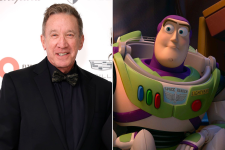
That mix of bravery and naïve confidence gave the first film much of its comedy, but also its heart. His arc; discovering identity, then embracing friendship, made him iconic. For kids, Buzz was imagination in plastic form. For adults, he was the reminder that self-discovery often starts with denial.
His catchphrase, “To infinity and beyond,” became more than a slogan; it turned into a generational motto.

Energetic and optimistic on the surface, she carried heavy baggage; fear of abandonment from her past owner. Her backstory, told through Sarah McLachlan’s song “When She Loved Me,” struck one of the most emotional chords in Pixar history.
Jessie became a voice for kids who feared being left behind and a symbol of resilience for adults who’d lived it.

No longer fragile porcelain, she became independent, resourceful, and unapologetically bold. This shift reflected broader cultural changes: female characters were no longer side notes; they were leaders.
For long-time fans, Bo Peep’s return felt like seeing an old friend reinvent themselves and thrive.
The supporting toys; Mr. Potato Head with his sarcasm, Rex with his lovable anxiety, Hamm the wisecracker, Slinky Dog’s loyalty, and Barbie’s surprise gave the franchise its balance of humor and heart. Each one embodied a toy archetype kids recognized in their own bedrooms.
Collectively, they reminded us that friendship is rarely about one or two; it’s about the whole crew showing up.
Like Toy Story, it emphasized teamwork and friendship, but it leaned more on slapstick humor and colorful spectacle. Fans remember it fondly, but it never quite hit the same cultural nerve. Still, both movies showed Pixar’s growing talent for balancing heart with humor.
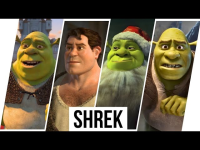
While Toy Story focused on timeless emotion and childhood nostalgia, Shrek thrived on parody and irreverence. Both created massive franchises and merchandising empires, but the fan reactions differed—Toy Story tugged at the heartstrings, while Shrek leaned into laughs and cheeky subversion.
It thrived on creativity, quick humor, and meta-commentary, pulling in both kids and adults. Unlike Toy Story’s emotional realism, The Lego Movie played with parody and rapid-fire comedy. Still, the connection was obvious; both franchises celebrated playtime as something powerful and deeply personal.
He was written as selfish, sarcastic, and even mean-spirited toward the other toys. Test audiences hated it. Pixar had to rework his character completely, transforming him into the protective yet flawed leader that fans embraced.
Imagine if they hadn’t changed him; the franchise might never have taken off.
It was a disaster, so bad it’s now called the “Black Friday Reel.” Woody came off as a bully, the tone was dark, and Disney nearly pulled the plug on the whole project. Pixar begged for two weeks to rework it. The result was the heartwarming story we know. A near-failure that turned into history.
The Pizza Planet Truck shows up in nearly every Pixar movie since. The classroom code “A113,” a nod to the animation classroom at CalArts, became a running gag. These tiny details created a game within the films—fans still pause scenes to spot them.
Billy Crystal was the first choice, but he turned it down; later admitting it was a huge mistake. He eventually voiced Mike Wazowski in Monsters, Inc. Instead, Tim Allen’s distinct voice gave Buzz his charm. Sometimes the “second choice” becomes the perfect one.
He was modeled after vintage pull-string dolls from the 1950s. Buzz, meanwhile, was inspired by the space race and action figures of the ’80s; think G.I. Joe meets NASA. This grounding in real toy history made the characters instantly familiar, even for adults.
These lesser-known facts show how fragile Toy Story’s success really was. A few different choices, and the toy box that raised a generation might never have opened at all.
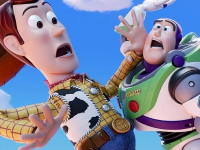
Woody and Buzz started as rivals, each threatened by the other’s presence. But their rivalry grew into brotherhood, teaching audiences that real friendship often begins with friction. Many fans saw their own childhood friendships reflected in those struggles.
Every toy faces the same fear: being replaced, forgotten, or left behind. Woody’s jealousy of Buzz, Jessie’s heartbreak over abandonment, and Lotso’s bitterness in Toy Story 3 all stem from this anxiety. It mirrored the very real human fear of becoming irrelevant. In the ’90s, as technology raced forward, the metaphor struck especially deep.
Buzz’s discovery that he wasn’t a real space ranger hit harder than expected. His crisis of identity, followed by acceptance, resonated with anyone who’s ever faced the truth of who they are. Jessie’s longing for belonging and Woody’s constant balancing act as a leader gave the films emotional depth that transcended age.
The climax of Toy Story 3—Andy handing Woody and Buzz to Bonnie—captured the ache of growing up. Fans who’d watched since childhood felt they were letting go, too. The message was clear: moving forward doesn’t erase the past; it honors it. That’s why adults cried just as hard, if not harder, than kids.
Bo Peep’s transformation in Toy Story 4 showed how the series adapted to changing cultural expectations. No longer just a love interest, she became independent and adventurous. Her evolution reminded fans that even beloved characters can grow, and that growth reflects broader conversations about gender roles and empowerment.
The beauty of these themes is their timelessness. They worked in the ’90s, and they still hit home today. Friendship, fear, identity, and change; those aren’t just toy problems, they’re everyone’s problems.
As the first fully CGI feature, it proved that computers could carry storytelling, not just special effects. Without it, there would be no Finding Nemo, Shrek, or Frozen. Every animated blockbuster of the last 25 years owes a debt to Andy’s toy box.
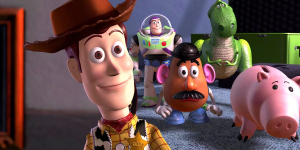
The films didn’t stay on the screen. They spilled into toy aisles, birthday parties, and even fast-food chains. Buzz Lightyear action figures and Woody dolls became must-haves. Disney reported billions in merchandise sales, fueling sequels, theme park attractions, and even dedicated lands like Toy Story Land in Florida and Shanghai. The toys became real, just like the films promised.
Catchphrases like “To infinity and beyond” and “You’ve got a friend in me” became part of everyday language. The characters appeared in commercials, parodies, and endless memes. For many, quoting Woody or Buzz became shorthand for expressing loyalty, courage, or humor.
Few films blur that line between screen and culture so seamlessly.
It was recognized by critics and institutions. Toy Story was nominated for three Oscars and received a Special Achievement Award for pioneering CGI. In 2005, it was added to the U.S. National Film Registry for its cultural significance.
The sequels pulled in even more awards, proving this wasn’t a one-hit wonder but a lasting juggernaut.
Fans never really let go. Online forums, fan theories, and YouTube remakes keep the films alive. One viral project recreated Toy Story 3 entirely in live-action using real toys. Nostalgia continues to drive excitement, especially with Toy Story 5 on the horizon, promising yet another wave of reunions, debates, and tears.
The legacy of Toy Story is twofold: it redefined what animation could be, and it reminded generations that childhood doesn’t have an expiration date.
Every time a kid pulls a string on a Woody doll, or an adult hums “You’ve Got a Friend in Me,” the toy box opens again.
You’re not alone. Those moments stick because Toy Story wasn’t just a movie, it was a mirror of our own growing up.
We’ve revisited the milestones, remembered the friendships, and uncovered the little secrets behind the scenes. We’ve laughed at Rex’s clumsy roars, felt Jessie’s heartbreak, and teared up when Andy drove away for the last time. That’s the power of this story; it grew with us, never leaving our side.
Nostalgia is proof those memories are still alive in you. Woody’s loyalty, Buzz’s courage, Bo Peep’s reinvention; those aren’t just lessons for toys, they’re reminders for us.
We’ve laughed, we’ve cried, and now we stand together with the same toys that shaped our world. So the next time you hear “To infinity and beyond,” don’t just smile, feel it. Because that echo from the past isn’t fading. It’s telling you the magic is still here, still yours.
And that, friends, is worth standing up and cheering for.

If you grew up in the ’90s, there’s a good chance Toy Story sat on that shelf, right next to your favorite snacks and action figures. Back then, Woody and Buzz weren’t just movie characters, they were part of the family, tucked into our toy boxes and our imaginations.
Ever find yourself replaying those moments in your head; wondering why a bunch of animated toys could leave such a permanent mark?
It’s because Toy Story wasn’t only about toys. It was about us. It mirrored our friendships, our fears of being left behind, even our quiet dreams of belonging. And let’s be honest, when Andy handed Woody over at the end of Toy Story 3, a lot of us felt like we were saying goodbye to our own childhoods. No shame in admitting that tear or two.
I can still picture myself holding onto my Buzz Lightyear figure, chanting “to infinity and beyond,” hoping maybe this time he’d take flight. That’s the kind of magic Pixar slipped into those films; it blurred the line between make-believe and memory.
In the pages ahead, we’ll crack open that toy chest again. We’ll revisit the milestones, relive the heartbreaks, and uncover the little secrets that made Toy Story more than just a movie.
Because the truth is, some stories grow up with us. And this one?
It still feels alive every time we hit play.
Where The Toy Story Started: Background
Back in 1995, a film changed everything.Toy Story wasn’t just another animated movie, it was the first full-length feature made entirely with computer-generated imagery. Pixar Animation Studios, then a small company backed by Steve Jobs, teamed up with Disney to make it happen. Directed by John Lasseter, the story was crafted by a team of soon-to-be legends: Pete Docter, Andrew Stanton, and Joe Ranft.
It hit theaters on November 22, 1995, and the impact was immediate. Kids saw their toys in a whole new way, and adults realized animation could be more than cartoons; it could tell layered, emotional stories.
The numbers tell the story. With a modest budget of around $30 million, Toy Story grossed over $373 million worldwide. It wasn’t just a hit; it was a cultural earthquake. The film earned critical acclaim, snagged three Academy Award nominations, and won a Special Achievement Oscar for breaking new ground in animation.
Think of it like this: without Toy Story, there’s no Shrek, no Frozen, no endless CGI blockbusters. It proved audiences wanted more than hand-drawn magic; they were ready for a new era.
The mid-’90s were buzzing with tech breakthroughs. The internet was becoming mainstream, home computers were showing up in living rooms, and video games like PlayStation were redefining playtime. Into this mix came a movie about toys dealing with change, jealousy, and friendship. It fit perfectly.
Disney was already in its Renaissance period with hits like The Lion King and Aladdin, but Pixar’s entry brought something different: sharp humor for adults, emotional beats for kids, and visuals no one had seen before.
Here is How The Toy Story Evolved (1995 – 2019)
For many, each film lined up with a new chapter of their own life. Childhood, adolescence, adulthood. The toys grew with us. Here are the movies and how they evolved:- Toy Story (1995): The original, introducing Woody, Buzz, and Andy’s room.
- Toy Story 2 (1999): A sequel that matched, and some argue, surpassed the original.
- Toy Story 3 (2010): Andy grows up, and audiences cried harder than they expected.
- Toy Story 4 (2019): Bo Peep returns, Forky arrives, and Woody makes a life-changing choice.
- TV specials: Toy Story of Terror! (2013) and Toy Story That Time Forgot (2014) kept the world alive on the small screen.

Main Characters That Defined a Generation
Woody (Tom Hanks)
Woody is more than just a cowboy doll with a pull-string.
He’s the loyal leader of Andy’s toys, the glue that holds the group together. His defining trait is his deep sense of responsibility; sometimes too much, leading to jealousy or fear of being replaced. Woody taught audiences what it means to protect those you care about, even when it hurts.
His bond with Andy and later his struggle to find purpose without him mirrored the universal fear of growing up and letting go.
Buzz Lightyear (Tim Allen)
Buzz blasted onto the scene as the space ranger who didn’t realize he was “just a toy.”
That mix of bravery and naïve confidence gave the first film much of its comedy, but also its heart. His arc; discovering identity, then embracing friendship, made him iconic. For kids, Buzz was imagination in plastic form. For adults, he was the reminder that self-discovery often starts with denial.
His catchphrase, “To infinity and beyond,” became more than a slogan; it turned into a generational motto.
Jessie (Joan Cusack)
Introduced in Toy Story 2, Jessie the cowgirl brought emotional depth.
Energetic and optimistic on the surface, she carried heavy baggage; fear of abandonment from her past owner. Her backstory, told through Sarah McLachlan’s song “When She Loved Me,” struck one of the most emotional chords in Pixar history.
Jessie became a voice for kids who feared being left behind and a symbol of resilience for adults who’d lived it.
Bo Peep (Annie Potts)
Originally Woody’s gentle love interest, Bo Peep stepped into a new role in Toy Story 4.
No longer fragile porcelain, she became independent, resourceful, and unapologetically bold. This shift reflected broader cultural changes: female characters were no longer side notes; they were leaders.
For long-time fans, Bo Peep’s return felt like seeing an old friend reinvent themselves and thrive.
The supporting toys; Mr. Potato Head with his sarcasm, Rex with his lovable anxiety, Hamm the wisecracker, Slinky Dog’s loyalty, and Barbie’s surprise gave the franchise its balance of humor and heart. Each one embodied a toy archetype kids recognized in their own bedrooms.
Collectively, they reminded us that friendship is rarely about one or two; it’s about the whole crew showing up.
Some Movies that Come Close to Toy Story
A Bug’s Life (1998)
Pixar followed Toy Story with A Bug’s Life, a film about an underdog ant named Flik and his band of misfits.Like Toy Story, it emphasized teamwork and friendship, but it leaned more on slapstick humor and colorful spectacle. Fans remember it fondly, but it never quite hit the same cultural nerve. Still, both movies showed Pixar’s growing talent for balancing heart with humor.
Shrek (2001–2010)
DreamWorks fired back with Shrek, flipping fairy tales on their heads with pop-culture jokes and satire.
While Toy Story focused on timeless emotion and childhood nostalgia, Shrek thrived on parody and irreverence. Both created massive franchises and merchandising empires, but the fan reactions differed—Toy Story tugged at the heartstrings, while Shrek leaned into laughs and cheeky subversion.
The Lego Movie (2014)
Years later, The Lego Movie echoed Toy Story’s core concept: toys coming to life.It thrived on creativity, quick humor, and meta-commentary, pulling in both kids and adults. Unlike Toy Story’s emotional realism, The Lego Movie played with parody and rapid-fire comedy. Still, the connection was obvious; both franchises celebrated playtime as something powerful and deeply personal.
5 Surprising things You Didn't Know About Toy Story
1. Woody Was Almost Unlikeable
In early drafts, Woody wasn’t the loyal cowboy we know today.He was written as selfish, sarcastic, and even mean-spirited toward the other toys. Test audiences hated it. Pixar had to rework his character completely, transforming him into the protective yet flawed leader that fans embraced.
Imagine if they hadn’t changed him; the franchise might never have taken off.
2 The Black Friday Reel Disaster
Before Toy Story got the green light, Pixar pitched an early cut to Disney executives.3 Easter Egg Legacy
Toy Story kicked off Pixar’s tradition of sneaking Easter eggs into their films.The Pizza Planet Truck shows up in nearly every Pixar movie since. The classroom code “A113,” a nod to the animation classroom at CalArts, became a running gag. These tiny details created a game within the films—fans still pause scenes to spot them.
4 Missed Casting Opportunities
Buzz Lightyear almost sounded very different.Billy Crystal was the first choice, but he turned it down; later admitting it was a huge mistake. He eventually voiced Mike Wazowski in Monsters, Inc. Instead, Tim Allen’s distinct voice gave Buzz his charm. Sometimes the “second choice” becomes the perfect one.
5 Real-Life Toy Inspirations
Woody wasn’t pulled from thin air.He was modeled after vintage pull-string dolls from the 1950s. Buzz, meanwhile, was inspired by the space race and action figures of the ’80s; think G.I. Joe meets NASA. This grounding in real toy history made the characters instantly familiar, even for adults.
These lesser-known facts show how fragile Toy Story’s success really was. A few different choices, and the toy box that raised a generation might never have opened at all.
Toy Story's Themes Cut Deep.
At its core, Toy Story is about friendship; messy, competitive, and ultimately unbreakable.
Woody and Buzz started as rivals, each threatened by the other’s presence. But their rivalry grew into brotherhood, teaching audiences that real friendship often begins with friction. Many fans saw their own childhood friendships reflected in those struggles.
Every toy faces the same fear: being replaced, forgotten, or left behind. Woody’s jealousy of Buzz, Jessie’s heartbreak over abandonment, and Lotso’s bitterness in Toy Story 3 all stem from this anxiety. It mirrored the very real human fear of becoming irrelevant. In the ’90s, as technology raced forward, the metaphor struck especially deep.
Buzz’s discovery that he wasn’t a real space ranger hit harder than expected. His crisis of identity, followed by acceptance, resonated with anyone who’s ever faced the truth of who they are. Jessie’s longing for belonging and Woody’s constant balancing act as a leader gave the films emotional depth that transcended age.
The climax of Toy Story 3—Andy handing Woody and Buzz to Bonnie—captured the ache of growing up. Fans who’d watched since childhood felt they were letting go, too. The message was clear: moving forward doesn’t erase the past; it honors it. That’s why adults cried just as hard, if not harder, than kids.
Bo Peep’s transformation in Toy Story 4 showed how the series adapted to changing cultural expectations. No longer just a love interest, she became independent and adventurous. Her evolution reminded fans that even beloved characters can grow, and that growth reflects broader conversations about gender roles and empowerment.
The beauty of these themes is their timelessness. They worked in the ’90s, and they still hit home today. Friendship, fear, identity, and change; those aren’t just toy problems, they’re everyone’s problems.
How Toy Story Influenced Our Life back in the Early '2000s
Toy Story reshaped the entire film industry.As the first fully CGI feature, it proved that computers could carry storytelling, not just special effects. Without it, there would be no Finding Nemo, Shrek, or Frozen. Every animated blockbuster of the last 25 years owes a debt to Andy’s toy box.

The films didn’t stay on the screen. They spilled into toy aisles, birthday parties, and even fast-food chains. Buzz Lightyear action figures and Woody dolls became must-haves. Disney reported billions in merchandise sales, fueling sequels, theme park attractions, and even dedicated lands like Toy Story Land in Florida and Shanghai. The toys became real, just like the films promised.
Catchphrases like “To infinity and beyond” and “You’ve got a friend in me” became part of everyday language. The characters appeared in commercials, parodies, and endless memes. For many, quoting Woody or Buzz became shorthand for expressing loyalty, courage, or humor.
Few films blur that line between screen and culture so seamlessly.
It was recognized by critics and institutions. Toy Story was nominated for three Oscars and received a Special Achievement Award for pioneering CGI. In 2005, it was added to the U.S. National Film Registry for its cultural significance.
The sequels pulled in even more awards, proving this wasn’t a one-hit wonder but a lasting juggernaut.
Fans never really let go. Online forums, fan theories, and YouTube remakes keep the films alive. One viral project recreated Toy Story 3 entirely in live-action using real toys. Nostalgia continues to drive excitement, especially with Toy Story 5 on the horizon, promising yet another wave of reunions, debates, and tears.
The legacy of Toy Story is twofold: it redefined what animation could be, and it reminded generations that childhood doesn’t have an expiration date.
Every time a kid pulls a string on a Woody doll, or an adult hums “You’ve Got a Friend in Me,” the toy box opens again.
Cheers to The Toy Story
Ever find yourself wishing you could rewind time; back to a Saturday morning when the toy box was more than plastic and string?You’re not alone. Those moments stick because Toy Story wasn’t just a movie, it was a mirror of our own growing up.
We’ve revisited the milestones, remembered the friendships, and uncovered the little secrets behind the scenes. We’ve laughed at Rex’s clumsy roars, felt Jessie’s heartbreak, and teared up when Andy drove away for the last time. That’s the power of this story; it grew with us, never leaving our side.
Nostalgia is proof those memories are still alive in you. Woody’s loyalty, Buzz’s courage, Bo Peep’s reinvention; those aren’t just lessons for toys, they’re reminders for us.
We’ve laughed, we’ve cried, and now we stand together with the same toys that shaped our world. So the next time you hear “To infinity and beyond,” don’t just smile, feel it. Because that echo from the past isn’t fading. It’s telling you the magic is still here, still yours.
And that, friends, is worth standing up and cheering for.

